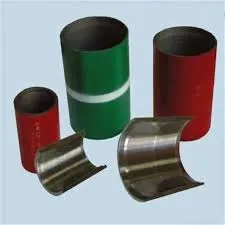- Afrikaans
- Albanian
- Amharic
- Arabic
- Armenian
- Azerbaijani
- Basque
- Belarusian
- Bengali
- Bosnian
- Bulgarian
- Catalan
- Cebuano
- Corsican
- Croatian
- Czech
- Danish
- Dutch
- English
- Esperanto
- Estonian
- Finnish
- French
- Frisian
- Galician
- Georgian
- German
- Greek
- Gujarati
- Haitian Creole
- hausa
- hawaiian
- Hebrew
- Hindi
- Miao
- Hungarian
- Icelandic
- igbo
- Indonesian
- irish
- Italian
- Japanese
- Javanese
- Kannada
- kazakh
- Khmer
- Rwandese
- Korean
- Kurdish
- Kyrgyz
- Lao
- Latin
- Latvian
- Lithuanian
- Luxembourgish
- Macedonian
- Malgashi
- Malay
- Malayalam
- Maltese
- Maori
- Marathi
- Mongolian
- Myanmar
- Nepali
- Norwegian
- Norwegian
- Occitan
- Pashto
- Persian
- Polish
- Portuguese
- Punjabi
- Romanian
- Russian
- Samoan
- Scottish Gaelic
- Serbian
- Sesotho
- Shona
- Sindhi
- Sinhala
- Slovak
- Slovenian
- Somali
- Spanish
- Sundanese
- Swahili
- Swedish
- Tagalog
- Tajik
- Tamil
- Tatar
- Telugu
- Thai
- Turkish
- Turkmen
- Ukrainian
- Urdu
- Uighur
- Uzbek
- Vietnamese
- Welsh
- Bantu
- Yiddish
- Yoruba
- Zulu
aluminum pipe couplings and fittings
Aluminum Pipe Couplings and Fittings A Comprehensive Overview
Aluminum pipe couplings and fittings are essential components in various piping systems, particularly in industries that require lightweight, corrosion-resistant, and high-strength materials. These fittings play a crucial role in connecting pipes, facilitating fluid flow, and ensuring system integrity. This article delves into the significance, types, and advantages of aluminum couplings and fittings, showcasing their applications across different sectors.
Understanding Aluminum Pipe Couplings and Fittings
Aluminum pipe couplings serve as connectors between two or more lengths of aluminum pipes. They are designed to create a secure junction that minimizes leaks and maintains the pressure within the system. On the other hand, aluminum fittings encompass a broader category, including elbows, tees, reducers, and caps, which allow for directional changes, size adjustments, and closure of pipe ends.
Types of Aluminum Pipe Couplings and Fittings
1. Couplings These are straightforward connectors that join equal or unequal sizes of pipes. They can be classified into two main types slip couplings, which slide over pipe ends, and threaded couplings, which have internal threads allowing for a more secure attachment.
2. Elbows Used to change the direction of piping, elbows come in various angles, most commonly 90 and 45 degrees. They help navigate around obstacles in a piping layout.
3. Tees These fittings provide a branch line or connection point and can be used to split fluid flow into two directions.
5. Caps and Plugs Used to seal the ends of pipes, caps and plugs ensure that systems are airtight and can be pressure-tested effectively.
aluminum pipe couplings and fittings

Advantages of Aluminum Pipe Couplings and Fittings
1. Lightweight Unlike steel and other metals, aluminum is considerably lighter, making it easier to handle and install. This is particularly beneficial in applications where weight restrictions are crucial.
2. Corrosion Resistance Aluminum naturally forms a protective oxide layer when exposed to the atmosphere, preventing further oxidation. This property is vital for systems exposed to moisture and chemicals.
3. Strength Aluminum boasts an excellent strength-to-weight ratio, providing the durability needed to withstand high-pressure environments while maintaining lightweight characteristics.
4. Versatility With the ability to be extruded into various shapes, aluminum fittings can be custom-designed for specific applications, making them suitable for a wide range of industries, including aerospace, automotive, and construction.
5. Recyclability Aluminum is highly recyclable, making it an environmentally friendly choice. Utilizing recycled aluminum reduces energy consumption and raw material extraction, contributing to sustainable practices in industry.
Applications of Aluminum Pipe Couplings and Fittings
The applications of aluminum couplings and fittings are vast. In the aerospace industry, where weight is critical, aluminum piping systems help maintain structural integrity without adding excessive weight. In the automotive sector, they are used in fuel and hydraulic systems due to their resistance to corrosion and lightweight nature. Additionally, in construction, aluminum fittings can be found in HVAC systems, plumbing, and firefighting systems, ensuring efficient and effective fluid transfer.
In conclusion, aluminum pipe couplings and fittings are indispensable in modern piping systems. Their lightweight, corrosion-resistant, and strong properties make them a preferred choice in various industries, contributing to improved performance and reliability in fluid management. Whether for industrial, commercial, or residential applications, understanding these components can enhance the design and efficiency of piping systems.
-
Tubing Pup Joints: Essential Components for Oil and Gas OperationsNewsJul.10,2025
-
Pup Joints: Essential Components for Reliable Drilling OperationsNewsJul.10,2025
-
Pipe Couplings: Connecting Your World EfficientlyNewsJul.10,2025
-
Mastering Oilfield Operations with Quality Tubing and CasingNewsJul.10,2025
-
High-Quality Casing Couplings for Every NeedNewsJul.10,2025
-
Boost Your Drilling Efficiency with Premium Crossover Tools & Seating NipplesNewsJul.10,2025







